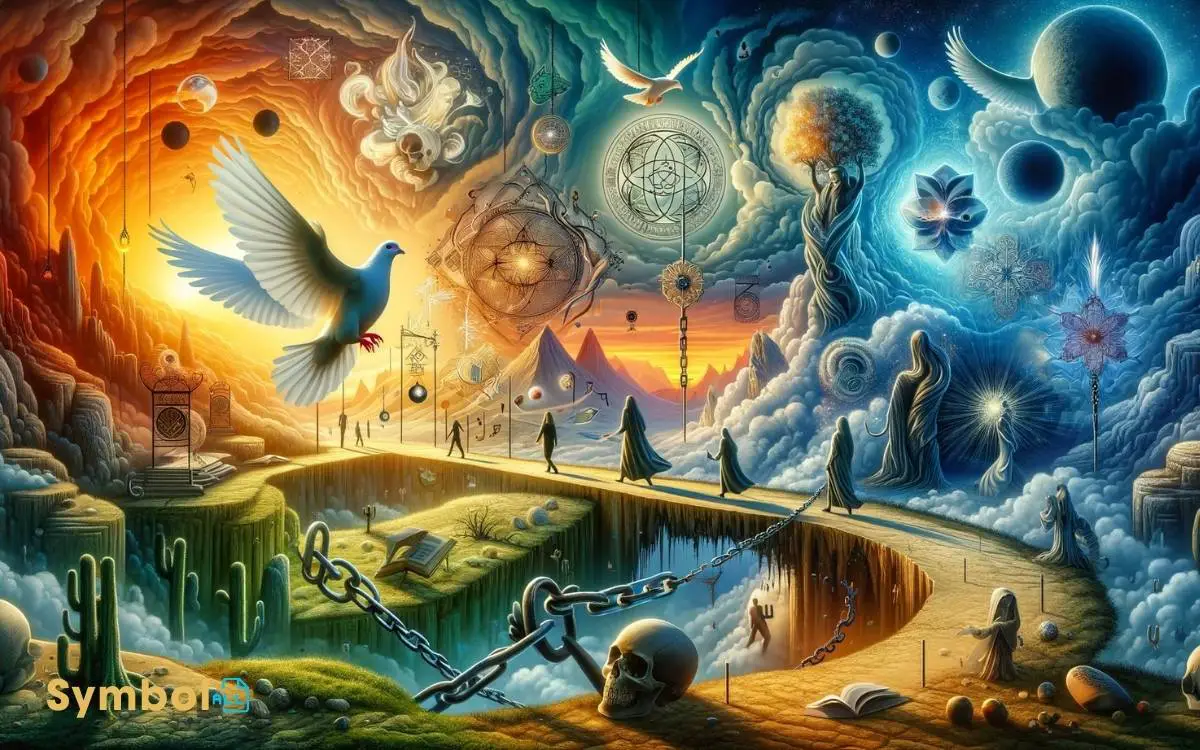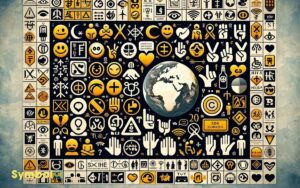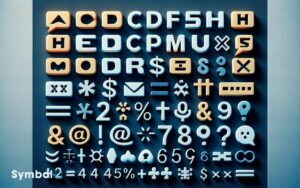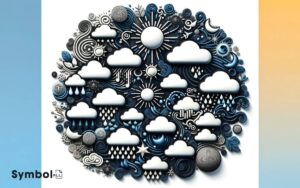What Is Symbolism Used for? Interpret Deeper Meanings!
You use symbolism to link tangible objects to abstract ideas, enriching your understanding and challenging you to interpret deeper meanings.
It’s a tool that communicates profound messages more digestibly, reflecting societal values and connecting historical contexts to the present. Symbolism also deepens emotional connections with narratives, adding complexity and nuance that bridges you to the story.
Beyond personal connections, it crafts universal ties, acting as a language transcending words to foster empathy and dialogue.
In character development, it subtly reveals inner qualities and motivations, mirroring thematic undercurrents. As you explore further, you’ll uncover the profound impact of symbols across mediums and cultures.

Key Takeaways
Defining Symbolism
Symbolism serves as a bridge, connecting the tangible world to deeper, abstract meanings, allowing you to explore concepts that aren’t immediately apparent. Symbolism and its concrete imagery provide a sensory foothold, enabling abstract ideas to resonate in the realm of human experience. Through this interplay, ordinary objects or events are imbued with profound significance, inviting us to uncover layers of meaning that extend beyond the surface. In this way, symbolism becomes a powerful tool for communicating complex emotions, philosophies, and universal truths.
It’s a literary and artistic device where symbols, whether they’re objects, words, or characters, stand in for larger ideas or themes.
You’ll find that symbolism enriches narratives, giving layers of meaning to what might otherwise be seen as straightforward. It challenges you to look beyond the surface, encouraging deeper thought and interpretation.
Symbolism isn’t just about adding complexity; it’s a tool for communication, enabling writers and artists to convey profound, sometimes intangible messages in a digestible format.
By recognizing and understanding symbols, you unlock the ability to perceive and appreciate the underlying messages within various forms of expression.
Historical Context
Throughout history, artists and writers have employed symbolism to reflect societal values, beliefs, and conflicts, inviting you to delve into the cultural and historical layers behind their creative expressions.
This methodical use of symbols serves as a bridge connecting the past to the present, allowing you to understand the evolution of societal norms and ideologies through a nuanced lens.
Enhancing Emotional Depth
By employing symbolism, artists and writers can imbue their work with layers of emotional depth, allowing you to connect more profoundly with the underlying sentiments and themes.
This method serves not just as a bridge between you and the narrative but also enriches your experience by adding complexity and nuance.
| Symbol | Emotional Depth |
|---|---|
| Dove | Peace, hope, and new beginnings |
| Storm | Turmoil, conflict, or emotional chaos |
| Winter | Coldness, end, or emotional barrenness |
Through these symbols, you’re invited to delve deeper into the narrative, uncovering emotions and insights that might not be immediately apparent.
This analytical approach ensures a thorough understanding, allowing the symbolism to resonate on a personal level, thereby enriching your overall experience and connection to the work.
Creating Universal Connections
You’ll find that creating universal connections through symbolism extends beyond mere representation, acting as a bridge across cultural divides.
By evoking shared emotions, it taps into a collective human experience, enriching the narrative’s depth and resonance.
This process not only unifies diverse audiences but also deepens their engagement with the material.
Bridging Cultural Divides
In bridging cultural divides, symbolism serves as a powerful tool to forge universal connections among diverse communities. Symbols act as a universal language, transcending verbal barriers and fostering a sense of shared understanding and identity.
By leveraging symbols that carry widespread recognition or similar meanings across cultures, it’s possible to create a common ground that promotes empathy and unity.
- Symbols transcend linguistic barriers, making communication more inclusive.
- They encapsulate complex ideas in simple, recognizable forms.
- Cultural symbols can serve as bridges, connecting disparate communities.
- By identifying common symbols, we highlight our shared human experiences.
- Symbolism in art and media can foster a global dialogue, nurturing cross-cultural understanding.
This approach not only deepens our appreciation of different cultures but also highlights the interconnectedness of the human experience.
Evoking Shared Emotions
Building on the foundation of shared symbols, it’s important to explore how these elements evoke universal emotions, creating connections that span across cultural boundaries.
Symbols, by their nature, tap into the collective unconscious, a term coined by Carl Jung, which houses the shared experiences and emotions of humanity.
When you encounter a symbol steeped in universal significance think of the heart as love or the dove as peace it’s not just an intellectual recognition.
You’re responding to a deeply embedded emotional trigger. This response transcends individual experiences, fostering a sense of unity and shared human condition.
It’s through this emotional resonance that symbols become a powerful tool in bridging divides, allowing you to communicate complex feelings and ideas in an immediate, visceral way.
Enhancing Narrative Depth
Delving deeper, symbols not only forge connections across cultures but also enhance the richness of narratives by establishing universal connections.
Through symbolism, you’re invited to explore layers of meaning that resonate on a global scale, making stories more profound and relatable.
Consider how:
- Symbols act as bridges, linking diverse experiences and emotions.
- They deepen understanding by layering meanings that transcend words.
- Symbols can transform ordinary elements into metaphors for larger concepts.
- They invite readers to engage actively, interpreting and finding personal relevance.
- Symbolism enriches the texture of narratives, making them more vivid and memorable.
Symbolism in Character Development
You’ll find that symbolism enriches character development by unveiling characters’ inner qualities in a nuanced manner.
It’s through evolving character dynamics and the use of symbolic motifs that readers witness the profound growth of a character.
This approach not only deepens our understanding but also connects us more intimately with their journeys.
Revealing Inner Qualities
In literature, authors often use symbolism to reveal the complex inner qualities of their characters, offering a deeper understanding of their motivations and conflicts.
This nuanced approach allows you, as a reader, to delve beneath the surface, uncovering layers of personality and psychological depth that direct descriptions might miss. Symbolism serves as a bridge between the seen and the unseen, the said and the unsaid.
- Colors: Reflect emotions or character traits.
- Objects: Signify personal or historical relevance.
- Nature: Mirrors internal states or transformations.
- Weather: Indicates mood or foreshadows events.
- Animals: Represent instinctual aspects or social roles.
Evolving Character Dynamics
Building on the understanding of symbolism to uncover character intricacies, let’s explore how these symbols evolve alongside character dynamics throughout a narrative.
As characters undergo transformations, face challenges, or achieve personal growth, the symbols associated with them also shift, deepening the audience’s understanding of their journey. This evolution can highlight pivotal moments, acting as a mirror to their inner changes.
For instance, a storm might initially symbolize turmoil for a protagonist but later signify cleansing and renewal as they overcome personal obstacles. By carefully tracing these symbolic changes, you gain insight into not just the character’s arc but the thematic undercurrents of the story.
This methodical approach allows for a nuanced exploration of how characters and their symbolic representations intertwine and evolve together.
Symbolic Motifs and Growth
Delving deeper into character development, it’s crucial to understand how symbolic motifs reflect and propel a character’s growth throughout their narrative journey.
Symbolism, when woven thoughtfully into the fabric of a story, serves not just as decoration but as a dynamic force driving the evolution of characters.
- Seasons: Reflecting stages of life, with spring symbolizing birth or new beginnings, and winter denoting end or wisdom.
- Light and Darkness: Often signal a character’s journey from ignorance to knowledge.
- Water: Represents purification, rebirth, or a character’s emotional state.
- Crossroads: Symbolize pivotal decisions that lead to character growth or change.
- Colors: Can indicate a character’s mood, personality traits, or significant transformations.
Reflecting Societal Themes
Symbolism often mirrors the complex layers of societal themes, offering you a window into the collective consciousness of an era. Through symbols, you’re able to grasp the nuanced beliefs, struggles, aspirations, and fears of a society.
They don’t just decorate a narrative; they serve as critical tools for reflecting on and critiquing societal norms and values. When you encounter symbolism in any form, it’s like peeling back the layers of an onion to reveal the core issues affecting a community.
Symbols act as bridges, connecting personal experiences with larger societal themes. This connection empowers you to see beyond the surface, fostering a deeper understanding of the dynamics that shape human interactions and societal structures.
Analyzing these symbols methodically can unveil insights into the evolution of societal values and conflicts over time.
Symbolism Across Different Mediums
As we explore the realm of symbolism, it’s crucial to recognize how it manifests uniquely across various mediums, from literature and film to art and digital platforms.
Each medium leverages symbolism to convey complex ideas, emotions, and narratives in a nuanced manner that resonates with its audience.
- Literature: Uses symbols in text to add depth to narratives, allowing readers to uncover hidden meanings.
- Film: Employs visual symbols combined with dialogue to enhance storytelling.
- Art: Utilizes symbols through colors, shapes, and forms to convey messages or emotions.
- Digital Platforms: Incorporate icons and imagery to represent complex concepts in a simplified manner.
- Music: Conveys symbolism through lyrics and sounds, evoking emotions and thoughts.
Conclusion
In your journey through the tapestry of symbolism, you’ve traversed from its roots to its branches, seeing how it weaves emotional depth, forges universal connections, and sculpts characters against the backdrop of society.
Like a ship navigating through an allegorical sea, symbolism transports ideas across the diverse oceans of mediums, anchoring them into the human experience.
It’s a lighthouse, guiding us to deeper understanding, ensuring the stories we tell and hear aren’t just heard but felt, connecting us all in the shared human condition.






